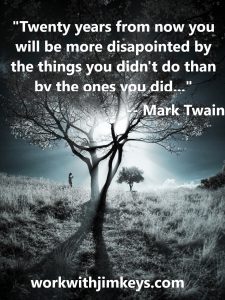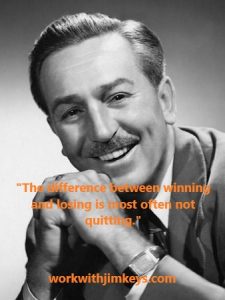- You are here:
- Home »
- Uncategorized
Category Archives for Uncategorized
Choosing the Most Effective Social Media Posting Times
It never fails, you received a free eBook and get excited to read about the latest, and best, way to utilized Social Media posting for your business. You hungrily tear through the information and then re-write your marketing plan to implement this new strategy only to receive entirely different information the next day, week, month, and so on.
Fortunately, there is a light at the end of the tunnel, thanks to CoSchedule. In their great wisdom, they have put together information from a variety of reports to provide you with the last word in Social Media Post schedules.
We learned in school that there are 4 time zones in the U.S. So, with clients spread from sea to shining sea, what are the best times to post on the various social media platforms?
To decide this, we need to take into consideration where most of these clients are living. According to Census records, 80% of those people living in the United States are found in the Eastern and Central time zones. It would make sense, then, to focus our schedules on time as it is followed in those locations.
As the platform that brought social media into the spotlight and taught us a new way to communicate and market ourselves and our businesses, it’s still the first account most new businesses, and 13-year olds, open when getting started in the Social Media universe.
Best Days: Sunday, Thursday, Friday, and Saturday
Best Times: 9 am, 1 pm, and 3 pm
Notes: Posting at 1 pm gets you the most shares while posting at 3 pm will get you the most clicks.
Best Day: Wednesday
Best Times: Noon, 3 pm, 5 pm and 6 pm
Notes: Wednesday about Noon and between 5-6 are the peak moments of an employee’s break times. Also, Twitter users are 181% more likely to be on their account during the commute home. Hopefully, for the rest of us, this refers to carpoolers who are not in the driver’s seat.
Best Days: Tuesday, Wednesday, Thursday
Best Times: 7-8am, Noon, and 5-6pm
Notes: Business people are most likely to peruse LinkedIn in the morning, in the same manner many (used to) peruse the paper. Also, even though LinkedIn is geared more for the business market, the best time to post is still before or after work.
Best Days: Weekends (Saturday and Sunday)
Best Times: 2 pm, 9 pm, and 2 am
Notes: The best window for posting is Saturday nights between 8-11pm. The worst time is during business hours.
Best Days: Monday and Thursday
Best Times: 2am, 8-9am, 5pm
Notes: Avoid posting between 3 pm and 4 pm. Posting a video at 9 pm can get you 34% more interactions.
Google+
Best Day: Wednesday
Best Time: 9am, 11am, 12-1pm
Notes: 90% of people on Google+ are lurkers, people who are just looking and not wanting or perhaps not ready to engage with the content or a call to action.
Additional Notes for Each Platform
Facebook: Widely used both via mobile and stationary devices, at home and at work.
Twitter: Audience dependent, as Facebook is also. Often set up as an RSS feed and visited during commutes, breaks and other down times.
Pinterest: Used mostly in the evenings after work and on the weekends during a viewer’s free time.
LinkedIn: Designed for the professional world, viewers use it during work hours and in the mornings.
Google+: Targets professionals in a similar manner to LinkedIn
Instagram: Designed for the mobile platform and therefore used at any time.
So, a special thank you goes out to CoSchedule for their tireless efforts to make scheduling social media posts across all platforms as easy as pie. For this and more information on their services, visit them at Coschedule.com.
Monitoring the social media marketing landscape is vital to your success. If you’d like to have access
to even more powerful marketing tips, as well as a way to generate conversion-ready Internet marketing prospects each month, click here to learn about our done-for-you system.
Business Funnels–Marketing and Sales–What’s the Difference?

Marketing Funnel–A system that assists in tracking the steps potential clients move through to before ultimately making a decision on the purchase of goods, or use of services. Marketing funnels let you see at each step what you need to do to influence potential clients toward the end goal, turning them into actual clients.
Sales Funnel–Refers to the buying process that businesses direct a client through when purchasing products or obtaining services. Like a Marketing funnel, it is divided into several steps. These steps will differ according to your particular sales model.
Or to put it more simply, marketing funnel is about capturing a lead and taking people to the point of a sale where a sales funnel captures and then leads people through the sales process via a series of pitches, etc.
In businesses where the marketing and sales departments/people are separate roles from one another, the two different concepts are implemented separately with Marketing Funnels working to create interest at the top and acquire clients at the bottom, these acquisitions becoming the top of the Sales Funnel.
In smaller businesses, this distinction may become a little muddled as employees may need to wear multiple hats, but for the sake of this article, we’ll go with the simplest viewpoint.
Your marketing is responsible for compelling an individual to become a potential client by creating awareness. It will typically focus on a broad area through a variety of methods, with the idea of attracting as much interest as possible. These days this of commonly done via social media, paid advertising, blog posts, and PR. Thanks to the internet, the possibilities are almost endless when looking for a target audience.
This initial scouting is the TOP of the marketing funnel. The goal of these endeavors is to provide enough information to interest the general masses in taking action and becoming potential clients.
The final goal is to end up getting the potential client to provide contact information and hopefully specific product interest. This can be accomplished in a number of ways including a free eBook download, providing a contact form with the promise of more info, calling a toll-free number, or any other process you can collect their details. This result makes up the BOTTOM of the marketing funnel.
By acquiring this info from a potential client, you will then be able to move them into the procedures outlined on the sales side and bring them to the TOP of the Sales Funnel.
Different businesses will show a variety of ways that this transition from Marketing to Sales may happen, but the overall desired result will be the same, gaining a loyal and long-term client that will refer others to a business’s products and services.
So essentially, sales have the power to change condition through the skills of the sales team. A sales funnel dictates the actual steps used to lead your customer towards the final goal, the actual purchase or use of services that you are offering.
Marketing, however, generally does not possess this same power. It needs to work with conditions as they come. The use of a marketing funnel is to create some anticipation about what is being offered or sold.
Both Marketing Funnels and Sales Funnels can become very complex systems with numerous sub-steps within each primary step, depending on who your client is compared to what you are offering.
Monitoring the social media marketing landscape is vital to your success. If you’d like to have access
to even more powerful marketing tips, as well as a way to generate conversion-ready Internet marketing prospects each month, click here to learn about our done-for-you system.
9 Awesome Tools to Help Your Twitter Game

With over 328 million monthly active users, it’s hard not to acknowledge the power and popularity of one of the world’s most prominent social media platforms. The microblogging trend has taken the internet by storm and it’s easy for anyone to follow their favorite brands and celebrities from the ease of their phone. You too can take advantage of this platform by utilizing these handy tools to boost your marketing efforts.
Hashtagify
Twitter is all about hashtags and there’s nothing better at finding the right hashtag than Hashtagify. If you want to know which hashtags work best for your industry, Hashtagify is the tool for you. With over 40 million hashtags in its repository, Hashtagify will be your best friend to get noticed during hashtag searches.
Tweriod
The clever combination of “Twitter” and “period” should tell you all you need to know about this app. You can spy on your followers and see when they are most active on Twitter, therefore giving you a better idea of when to post during peak times. Combine this with a scheduling app and watch your retweets climb higher.
Buffer
Speaking of scheduling apps, Buffer gives you the ability to schedule tweets and posts at certain times. This is especially useful when trying to target your audience during peak times or when experimenting with different time zones and the like. You can pre-write all your tweets and have them scheduled to be sent out in a few hours or even a few weeks.
Twilert
Another clever combination of words, this app alerts you when your keywords are messaged on Twitter. For example, you might opt-in to receive emails whenever someone mentions your brand name on Twitter, allowing you to swiftly respond to them. Managing your social media presence and watching what people are saying about your brand is incredibly important to maintain a positive image of your company.
Bit.ly
Bit.ly is great because it does two things. The first is that it shortens your links which is very useful for fitting in everything you need to say in a 140-character limit. The second thing Bit.ly does is track the number of clicks so you can see how many people actually interacted with your link.
TweetChat
One of the most annoying aspects of Twitter is that you can’t interact with someone directly unless you send them a direct message or input their handle in a private tweet. Luckily, TweetChat changes all that. This handy app allows you to have private conversations without all that other annoying hassle.
BuzzSumo
This tool used by everyone from BuzzFeed, Rolling Stone, National Geographic, IBM, Expedia, and more. It’s most useful feature is that it allows you to see what sort of content related to a certain topic is most popular so that you can gain insight as to how people are talking about that topic. It also helps you track what your competitors are doing on social media so you can compare statistics against them.
Triberr
Twitter is a great place to find like-minded people. Triberr does exactly that; you can find “tribes” of people with the same interests or in the same industry as you.
HootSuite
If you are in charge of managing multiple social media accounts, HootSuite is the tool for you. This handy program allows you to simultaneously look at and manage several different accounts at the same time even if those accounts are on the same platform. Its clean interface makes it easy to use and allows you to compare posts side-by-side.
These are just a few of many useful Twitter tools that can help gain you followers and boost brand engagement. Simply find out which ones work best for you, make an account, and have fun.
All of these apps are easy to use, so feel free to experiment and test out different techniques to find out which marketing strategy works best for you. And, if you’d like more access to invaluable online marketing strategies, check out our done-for-you service.
Boost Your SEO with Proper Internal Linking on Your Website

Internal linking is an important step in good SEO practices. Yet, it’s often overlooked. With proper internal linking, you can easily boost your SEO, without spending any money. It’s a simple practice.
What is an internal link? Any link on your website that directs users to another page on your site is an internal link. Find out how to properly use internal links to improve navigation and increase your SEO.
Use Anchor Text for Internal Links
As much as possible, you should use anchor text for your internal links. This means wrapping relevant text in a link, as opposed to using an image for your link.
You don’t need to over-think your anchor text. Simply add a link wherever relevant. Highlight the relevant text and add your link.
Use Deep Links Throughout Your Content
The majority of your links should be deep. They should link to pages that aren’t available from the home page or main menu. In fact, you should avoid linking to your home page or contact page too often.
There’s a good chance that your main menu already includes a link to your homepage. There’s no reason to keep linking to your home page or other URLs that are available from your main menu.
Your Internal Links Should Be Natural
Internal links serve two purposes. They improve SEO and they help with navigation. Your internal links should add value for your visitors. They should serve a purpose and be natural.
Instead of worrying about whether or not your anchor text includes specific keywords, keep your internal links natural. Only highlight text that is relevant to the destination URL.
Keep Track of Your Internal Links
You should also keep track of your internal links. This is important for being able to remove broken links. You can use Google Analytics, or any other analytics software, keep track of your links.
Along with keeping track of your links, you can use analytics to monitor your metrics. Find out which links receive the most clicks. Pay attention the anchor text that is used.
By evaluating the performance of your internal links, you can decide what works best. You can use this information to improve the way you add internal links.
Don’t Get Carried Away
While you should have plenty of internal links throughout your site, don’t get carried away. There isn’t a specific number of links to include. The main rule is that you want to keep your content readable.
If you add too many internal links, your content will be hard to read. Readers will get distracted by the constantly highlighted words throughout your content.
If possible, limit your internal linking to one link for every two paragraphs. This allows you to add a sufficient amount of links, without sacrificing the quality of your content.
Place Important Links Higher in Your Content
When adding internal links, keep important links towards the top of your content. The further down the page, the less value the link has for SEO purposes. Search engines, including Google, place more value on links located along the top third of your page.
Use Text Menus for Your Main Navigation
As a final tip, you should try to employ text menus whenever possible. Instead of using images or fancy JavaScript to create stunning menus, simply use text. You can still style text menus to match the overall style of your site.
Text menus are searchable by search engines. But, images and menus that require Flash or JavaScript will remain unsearched by search engine spiders.
Start improving the SEO of your site by using the tips provided. If you’d like additional online marketing tips, including a simple lead generation system, then click here to learn about my done-for-you system.
Six Strategies for Gaining Instagram Followers

As Instagram continues its meteoric rise in both monthly user base and saturation metrics, it makes sense for businesses to get on board. Statistics show that engagement rate on Instagram is much higher than either Facebook or Twitter. Not making Instagram a part of your marketing campaign is a mistake your business cannot afford to make.
With that in mind, here are a few strategies on how to grow your Instagram following:
Post Daily
Get into a regular flow when posting to Instagram, but don’t inundate your followers with content. A few times a day is probably the ideal number. Quality content combined with consistency will do more to drive up your number of followers than flooding their feeds will.
Share on a regular basis so you can discover what works best for you and your business. Provide creative, engaging content, and you’ll be rewarded with not only more supporters, but followers that are interested in your content.
Promote User Content
A great way to promote user content is to take fantastic content from other creators, and put it on your Instagram account. Be sure to give credit to the original producer of the material, though. Show off the unique and uncommon stories your users have to tell, and when you do, make sure to add hashtags that point back to your business.
Photo Contest
Photo contests are a fun way to share your brand while gathering photos from followers under a theme. Be sure to get involved in the contest yourself while sharing it across multiple platforms. But don’t be in a hurry. Allow users time to hear about the contest and participate.
Make sure the rules are clear and concise, so you avoid confusion with the contest. If you’re unsure of how to proceed, find a business to partner up and double the audience.
Understand Hashtags
Hashtags are an essential part of Instagram, and using the right hashtag can make the difference between a post that falls flat and one that shoots to the top of your followers feeds.
To determine the appropriate hashtags to use, peruse the content of those similar to your own. You can search for and record hashtags that are relevant to your brand, then use them in your content to drive traffic to your business.
Filter Selection
Instagram filters are fun, but also a little confusing. Which ones should you use to drive views and engagement? Pay attention to the responses you receive depending on the filter you use. Some tend to lead to more views, while others may contribute to a higher number of comments. Play around with them and find the ones that work best for your business.
Engage
Really engage with your followers. A list of all the greatest tips and tricks will be helpful, but they’re never going to compete with rolling up your sleeves and getting dirty on the platform. Be intentional about leaving thoughtful, engaging comments, like photos that strike you as meaningful.
Find new people to follow on a regular basis, interact with them, and respond to their questions and comments. Doing so will result in natural and organic growth for your Instagram platform.
Gaining followings on other social media networks can feel like you’re beating your head against a wall, but that doesn’t have to be the case with Instagram. Create engaging, quality content and connect with your followers.
The way you engage with your followers will have a direct impact on how your account increases. If you’re willing to help others, word will spread, and growth will occur. For additional help, you can check out our training and coaching lead generation system.
How to Find Profitable Products

Making a lot of money on the internet used to be a pipe dream. Many people wished it was possible but the systems simply weren’t in place to make it a reality. Things have changed quite a bit over the past few years and many marketers have started earning a consistently high income every month.
Even though we hear stories of people making it big online, many are still skeptical. With the great assortment of different ways to make money on the web, it can be hard to find one that works. The best place to start is also the most traditional method.
If you can find great products then you’ll have an easier time selling them. This article will help you find the most profitable products around.
Look to yourself
The easiest way to find products people want to purchase is to look to yourself. We all have hobbies and interests that we spend money on. We also have a few different products that we need to live and these can range from small things like a toothbrush to big things like a refrigerator.
If you’re willing to spend money on something, the chances are good that someone else will too. Some hobbies are really popular and can end up being quite expensive. What makes this such a great option is that you’ll be promoting something you know very well.
Hire someone
It’s becoming increasingly easier to simply hire someone to make products for you. Books, videos, websites, programs, games, and more can all be outsourced to someone else.
This may require a bit of a financial investment but it’s important to remember that it is an investment. You’ll be making money with this product so the more you invest in it the more you’ll earn later on.
Established products
Promoting established products is one of the easiest and most profitable routes to take. These products have been around for a while, they were created by a reputable and recognizable company. Since they already have a good reputation, the hardest part about marketing is already done for you.
There are countless different products you can promote. With the right strategy and enough action, you can end up making quite a significant income by promoting other people’s products. Finding the right established products can be a bit of an art form itself.
You’ll want to find a good balance between a product being well known and one that is over saturated. You also need to uncover products with a good price point, one that isn’t too high but not too low either. Most importantly, you need to be sure there is a system set up which allows you to get paid for the work you’ve done.
This can be both frustrating and time-consuming. If you want to get started right away, then you can avoid the research phase and get instant access to the web’s greatest Done-For-You product fulfillment, payment processing, and customer service by clicking here.




